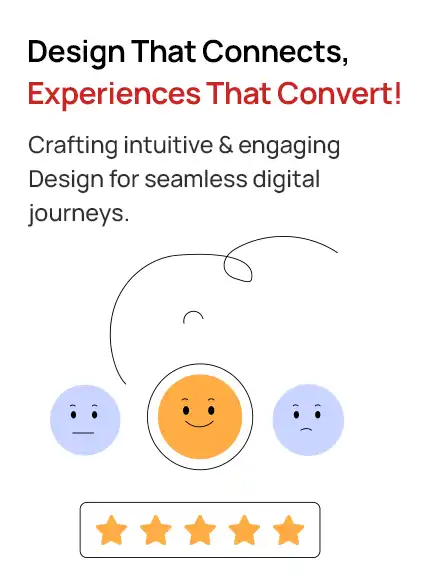
Why Investing in Brand Strategy Services Is Essential for Your Brand’s Success
July 30, 2025
How Startup Companies Can Find the Right UI/UX Designer
August 2, 2025
Why Investing in Brand Strategy Services Is Essential for Your Brand’s Success
July 30, 2025
How Startup Companies Can Find the Right UI/UX Designer
August 2, 2025How to Create a Winning Pitch Deck for Investors
August 1, 2025
- 18 min to Read
Introduction
In the world of fundraising, your pitch deck is often your only chance to make a first impression. It’s more than a slideshow—it's your story, vision, and business plan condensed into a compelling visual narrative.
Whether you're a startup founder raising your first round or an established entrepreneur exploring new capital, crafting the right pitch deck for investors can make all the difference.
In this guide, we’ll cover everything from what a pitch deck is to how to design it like a pro.
What Is a Pitch Deck for Investors?
A pitch deck for investors is a visual presentation that explains your business idea, goals, and growth plans to potential investors.
It typically contains 10–15 slides and covers aspects such as your product, market opportunity, business model, financials, and team.
It’s not about overwhelming your audience with data. It’s about building confidence in your vision and proving you understand how to grow your company and generate returns.
Key purposes of a pitch deck:
- Grab investor attention quickly
- Simplify your complex business story
- Showcase traction and market potential
- Inspire trust in your leadership and vision
How to Create a Professional Investor Pitch Deck
Creating a professional investor pitch deck isn’t just about beautiful design—it’s about delivering the right information with clarity, logic, and confidence. Your deck should tell a compelling story that inspires investors to trust your vision, understand your business, and believe in your team. Here's a step-by-step breakdown of what to include in a winning investor pitch deck:
1. Start With a Compelling Cover Slide
The first slide introduces your brand. It should include your startup’s name, tagline, and logo. Think of it as your first impression—use clean visuals and a modern layout to reflect your brand identity. This slide should give investors a quick, professional sense of who you are and what your company represents.
2. Define the Problem
This is your chance to show the investor that you understand a real and pressing problem in the market. Describe the issue in a way that’s relatable and supported by data or examples. The more urgent and widespread the problem, the more valuable your solution will appear.
3. Present Your Solution
Now introduce your product or service and explain how it solves the problem. Focus on what makes your solution different, effective, and scalable. If you have a prototype, demo, or screenshots, include them. Visuals help clarify the idea and give investors something tangible to connect with.
4. Explain the Market Opportunity
Investors want to know that the opportunity is big enough. Break down the market into three key components:
- TAM (Total Addressable Market): The full market demand for your solution.
- SAM (Serviceable Available Market): The portion of that market you can reach.
- SOM (Serviceable Obtainable Market): The segment you’re targeting initially. Use data to support your claims and highlight growth potential.
5. Show Your Business Model
Explain how you’ll generate revenue. Include your pricing strategy, sales channels, and any expected customer acquisition or lifetime value figures. This section helps investors understand how you plan to sustain and grow your business financially over time.
6. Demonstrate Traction
Highlight any existing progress that validates your idea. This could include customer signups, revenue growth, partnerships, testimonials, or pilot projects. Investors look for momentum and signs that there’s already market interest and adoption of your product or service.
7. Highlight Your Go-to-Market Strategy
Describe how you plan to attract customers and scale operations. Include marketing strategies, sales approaches, partnerships, and distribution channels. If you have early results or metrics like customer acquisition cost (CAC) and lifetime value (LTV), share them. This shows you've thought through how to enter and grow in the market.
8. Showcase the Team
Investors invest in people just as much as ideas. Introduce your core team, outlining their roles, skills, and past experiences that make them capable of executing the business plan. Mention any notable advisors or mentors, especially if they add credibility in your industry.
9. Outline Financials
Share a high-level overview of your financial projections for the next 3–5 years. Include revenue forecasts, expected expenses, profit margins, and key assumptions. This helps investors evaluate your growth potential and the feasibility of your goals. Keep the data realistic and concise.
10. Define the Ask
Be direct about how much funding you’re seeking and what it will be used for. Whether it’s for hiring, marketing, product development, or operations, outline your plan. Investors also want to know what milestones you expect to achieve with the raised capital.
11. Add a Closing Slide
End your pitch with a strong, memorable summary of your startup’s vision.Clearly restate your funding needs and invite investors to be part of your business journey. A thank-you note and contact information are essential. This is your last impression—make it confident and forward-looking.
Investor Deck vs Pitch Deck: Is There a Difference?
The terms are often used interchangeably, but there’s a slight nuance:
- Investor Deck: Tailored specifically for investors. Focuses on ROI, scalability, business model, and financials.
- Pitch Deck: Broader term. Can be used in competitions, partner meetings, or customer showcases.
In essence, every investor deck is a pitch deck—but not every pitch deck is an investor deck. The difference lies in the audience and purpose.
What Should Be Included in an Investor Pitch Deck?
Here’s a checklist of the must-have slides:
- Cover Slide: Company name, logo, tagline – clean and visually engaging introduction.
- Problem: Clearly define the real-world pain point you’re solving.
- Solution: Show how your product uniquely addresses the identified problem.
- Market Opportunity: Quantify target market size, segments, and growth potential.
- Product/Tech: Demonstrate product features, technology, and key differentiators visually.
- Business Model: Explain how you make money—pricing, revenue, monetization strategy.
- Traction: Share users, sales, partnerships, or relevant growth metrics.
- Go-to-Market: Outline customer acquisition channels, marketing, and sales approach.
- Competition: Compare key competitors and highlight your unique advantage.
- Team: Introduce your core team and relevant backgrounds or expertise.
- Financials: Present high-level projections, assumptions, and key financial indicators.
- Fundraising Ask: State how much you're raising and intended use of funds.
- Vision (optional): Share your long-term mission and what success looks like.
Pitch Deck Design Cost
The pitch deck design cost varies based on complexity, number of slides, revisions, and expertise level of the design partner.
Here’s a general range:
- Freelancers: $500–$1,000
- Agencies: $1,000–$5,000+
While budget matters, remember—your deck could determine whether you raise $1M or nothing. Investing in a professional pitch deck can pay off tenfold.
How to Find the Best Investor Pitch Deck Consultant?
A consultant can help you sharpen your narrative, improve structure, and refine your visuals. Here’s how to choose the right one:
1. Check Portfolio & Experience
They should have past work for startups in your industry or funding stage.2. Look for Strategic Thinkers
Design is important, but strategic storytelling is key. Find someone who understands business and fundraising.3. Ask About Their Process
Good consultants have a structured process involving discovery, content alignment, revisions, and delivery.4. Reviews & Results
Look for testimonials or case studies showing how their decks helped startups succeed.Final Thoughts: Choose the Right Partner
Your pitch deck is one of the most important tools for raising funds—it deserves expert attention. From crafting a strong narrative to building a clean, investor-ready design, every step should be done with care.
At Upclues, we’re a pitch deck design agency that helps startups tell their story in a clear and compelling way. Our pitch deck design services are tailored to your industry, stage, and fundraising goals.
Whether you need a quick update or a complete redesign, we’re here to help you pitch with confidence.





